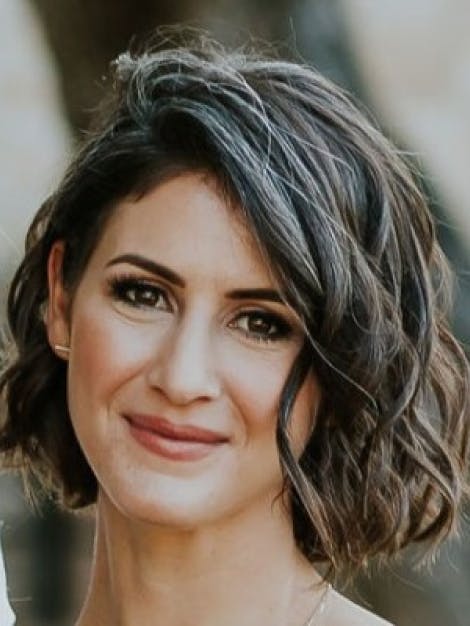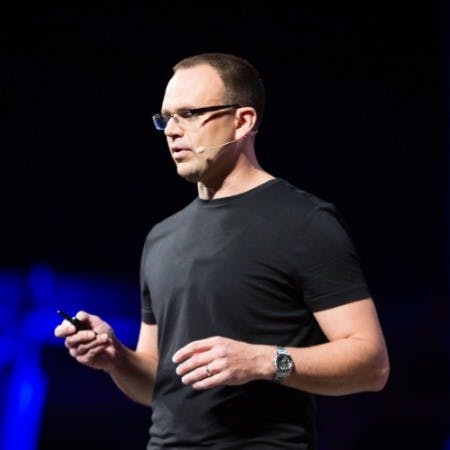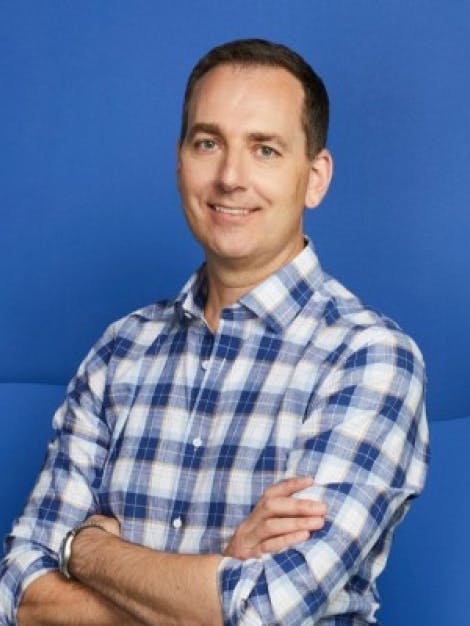Season 5 - Episode 8
Driving Change Through Influence
Justin Bauer is the EVP of Product at Amplitude Analytics. Justin has led Product Management, Design, Education, Growth, and Analytics for 5 years now. In this podcast, Justin talks us through all things related to the product, product strategy, culture, and how to drive change through influence.

“Question [00:03:31] How did you get started in Product Management?”
Justin [00:03:38] Like many product leaders, I didn’t start my career in product and actually didn’t even start in tech. I grew up in a small town, Iowa. I moved out West after my undergrad to work as an econometrician. I had the opportunity to work with a guy named Daniel McFadden who won the Nobel prize in economics based off his work industry choice modeling, which is something that I had done in undergrad.
I really grew passionate about figuring out ways that I could apply some of these analytical skills that I had to the world of business. I happened to meet a partner at McKinsey who was building out their analytics practice. And so I moved down to LA to help him do that. And that was actually where I got my first taste of product which is pretty rare, not many people work at product and consulting companies, but I was actually part of the team that built McKinsey’s first enterprise software package.
After doing that, I could not go back to the world of consulting. I had so much fun and really saw the scale that software can have in helping change people’s lives. And so I’ve been building product ever since.
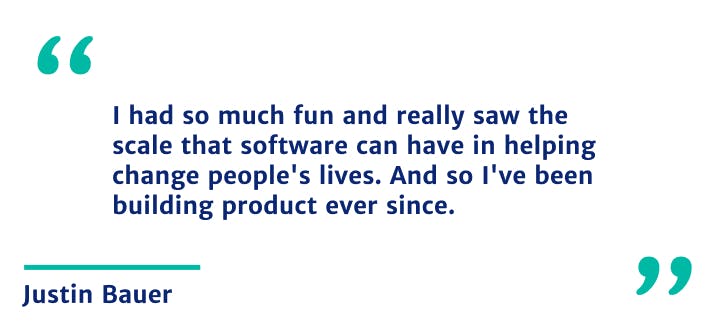
“Question [00:05:20] Tell us about the announcement of your newest funding rounds and what that means for your company?”
Justin [00:05:26] It was really exciting moment for us. I think it’s just one step in the ultimate journey of our mission, which is to help the world build better products. It’s something that I’ve been passionate about for a while. Something that our co-founders Spencer Curtis and Jeffery really centered the team of the company over when they started it. And I’ve been lucky enough to be part of that journey. I joined five years ago, and have seen us scale in the of companies that we’ve helped build better product experiences and really excited about continuing to do that into the future.

“Question [00:06:11] As a product person, you have to fall in love with the problem and not just with the solution. For you, what are some of those problems that you are passionate about?”
Justin [00:06:19] At the highest level, I talked about the mission, helping companies build better products. I think there’s a lot that’s written and talked about in the art of product, but not as much on the science of products. I think that’s really where we’re trying to come in to help solve that problem. How do you understand user behavior at scale? How do you make sure that you’re consistently evaluating the impact of the changes that you’re making? And how do you empower your company to make decisions off of customer data to take action on that, to ultimately build that better experience? There are a number of challenges within each of those places, but ultimately that’s the core problem that we’re trying to help our company solve.
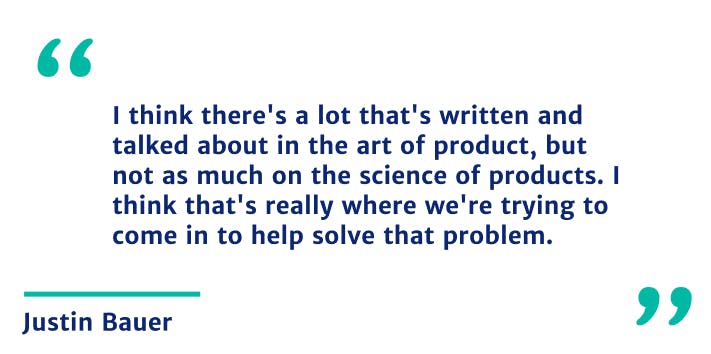
“Question [00:07:15] Since you started a company in analytics, tells us about your experience as a founder first that then transitioned to working in product at a larger organization?”
Justin [00:07:22] I had the opportunity to start a gaming company. I started as a passion project with a couple of friends and it ended up taking off. As you can imagine in gaming, a lot of decisions are made based on the data. So we used a number of the different kinds of products that existed at the time to help us make sure we understood, our users, understood where they’re getting blocked, trying to find things like our aha moments. Like that many people who are here are trying to do right now, at their early-stage companies. As part of that journey, I realized that there are a lot of things that didn’t exist in the market, that we really needed to help us build a better product.

I ended up building a number of those capabilities ourselves and actually got me inspired to potentially start my own analytics company. Because I saw how important these were two decisions I was making and I happened to be working with a number of startups in LA, helping them make the same decisions. But luckily around that time, I happened to meet Spencer who’s one of the co-founders of Amplitude through a friend and they had just started on their path. They had the first version of their product out. For me, we really shared in that vision. Ultimately I think this is true for anyone who is thinking about starting a company, the real reason to do it is because you want to change the world because you’re just so passionate about the problem that you want to solve that you’ll do what it takes to solve that problem.
For me, I thought the only way to do that was to start a company. But once I met Spencer and saw that we were aligned in that vision, it was a no-brainer. I knew that I could work with him to ultimately do that.
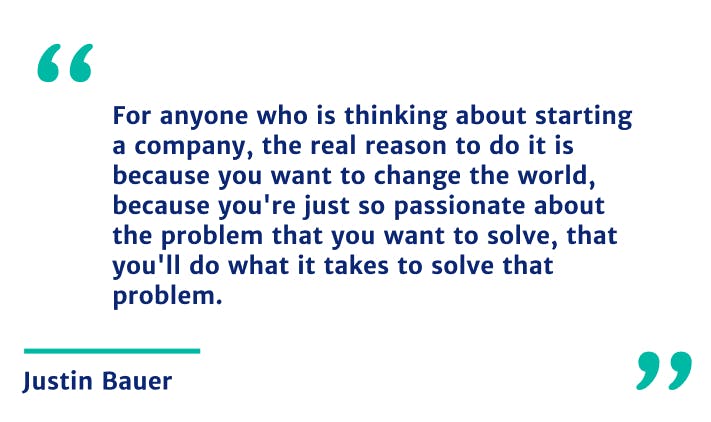
“Question [00:09:36] What are some of the overlapping skills between founder CEO and a Product Manager? ”
Justin [00:09:42] Especially at the CEO founder level, there’s definitely overlap. If you’re an early stage founder, finding product market fit is obviously critical. At the end you have to start with a world-class product. I don’t think any company can be successful without starting with a world-class product. And that obviously is also the job of a product leader is to build a world-class product. And so there’s a high level of overlap there. I’d also say that, as the skill sets, as the company scales, it’s really critical to be customer obsessed as both the CEO, as well as a product leader. You really have to start from the customer.
I do think there are a lot of things that actually don’t necessarily overlap. It’s important to call those out because there is a lot of is the PM, a mini CEO kind of conversation. Some of the key differences that I’ve seen at least, one is, PMs create a vision to inspire and they drive change through influence. They typically don’t manage a lot of people. In fact, the product leader within any executive team probably has the least number of people reporting to them. That’s certainly true for me compared to my peers. The reason for that is I drive change through influence. I influenced the rest of the company and actually think about the company-level strategy and the product-level strategy.
Obviously, the entire executive team manages a very large number of people. They also have very large budgets and fiduciary responsibilities that product leaders don’t typically have. And so I do think kind of the people management and fiduciary responsibilities are at least two jobs that are critical for CEOs that aren’t necessarily as important. But, those are things that happen, I think, at a different level of scale.
Then the last one that’s actually changing, so I’m really happy to see this is kind of owning the number, so do you own revenue, right? As a CEO, you are accountable for driving revenue and growth of the company, traditionally product was not, but this is actually changing quite a bit, which is really exciting. We’re now seeing that product actually does own revenue and is driving that because digital products are actually what’s driving growth. So it’s exciting to kind of see that transition happening. I do think it will be an important step of product leaders, ultimately becoming CEOs of these, enterprise companies, because they’re getting more and more of that responsibility of owning the number.
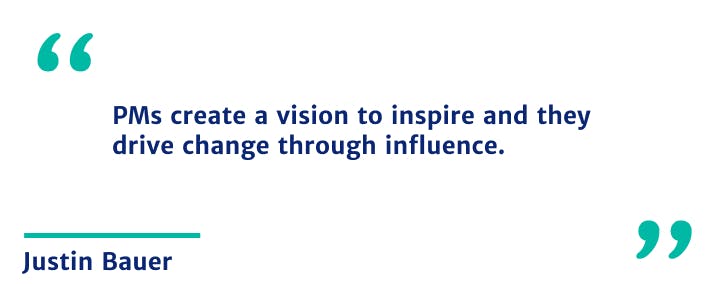
You might be interested in: Leadership In Tumultuous Times
“Question [00:12:22] What are some misconceptions that you’ve seen throughout your career in Product Management?”
Justin [00:12:44]Yeah, I think the biggest one is that the PM’s job is to come up with all the ideas and solutions and decide what should be built. Whereas I believe that the best product leaders own the problem, we should talk about like falling in love with the problem, and then they make sure the organization delivers the best solutions to solve those problems. That doesn’t mean they have to come up with those solutions. It doesn’t even mean they have to come up with the problems. It means they have to get the organization to understand that and frame it well. And so the best product leaders are facilitators, they’re framers. They inspire people, and they create an environment that really empowers anyone in the organization to develop innovative ideas or solutions. It’s not about them. It’s about the company, it’s about the product, it’s about the customer. I certainly think that can be a misconception when people want to get into product, and so that’s something I really try to evangelize.
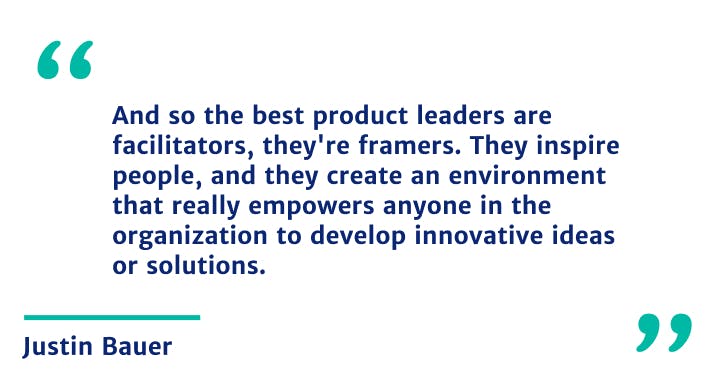
“Question [00:14:06] How are, how were you able to continue learning personally as the company learn?”
Justin [00:14:12] One of our values of the company is a growth mindset. And I think something that I really, really believe in, and I think at any stage you can learn and should be learning. I think about learning on a couple of dimensions, I think about there’s both the how so, how do we build product? How do we scale a company? And then also, what are we delivering? So learning about the customer and understanding technology and changes. I do focus a lot of my energy on making sure that I’m working on boats on the, on the how, and kind of how to scale myself. I think as you said, the type of problems that existed at a 10 person company look very different than a hundred-person company, a very different than a person company. I’ve had opportunities to work at companies of different scales, but I’ve not led product through all of those, different sizes of companies.
Certainly, I’m learning a lot in terms of what that means to actually be leading a company, at the stages that we’re at right now. To learn about that, that I surround myself with people who’ve done it before. so I go and talk to other product leaders. I was talking recently to the head of product at PagerDuty. Who’s probably like a couple of years ahead of us. And so learning from her in terms of like, what were the scaling challenges that she saw at the stage that I’m aware of that. I surround myself, I’ve got mentors, as well that are leading, companies that I would like to, and, to become, or ultimately help lead, able to, to become.
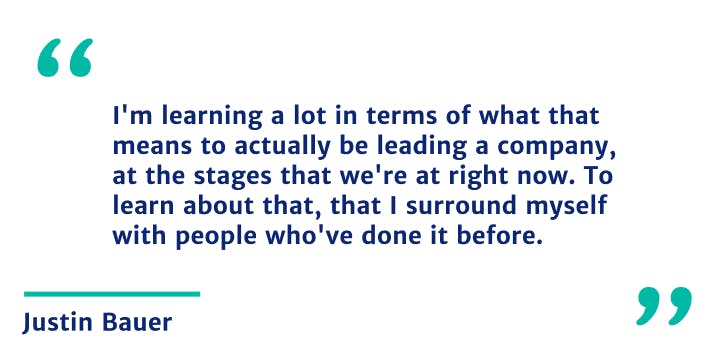
I read a lot, and so I read at least an article a day, but probably close to 20 to 30. I think there’s so much great content that’s out there. For me, I try to find those opportunities in the morning or end of the day, just to kind of read a couple of articles just to see what I can learn. Those are areas that I kind of think about the how in terms of the problem. I spend a lot of time with customers and I learn a lot from our customers. It’s really important to approach your job in that fashion of how do you learn from your customers? I think too many times people go into customer calls trying to sell or validate kind of what they’re building or working on, versus – I think it’s really important to think about evaluating what you’re building or working on. So I actually looked to try to invalidate my assumptions when I go and talk to customers. Those are the most interesting times when someone, a customer actually says something I didn’t expect to hear because those are pockets of learning that many times lead towards innovation.
So I spent a lot of time with customers. I try to do 20 plus percent of my time. My team spends 20 to 30% of their time talking to customers. I think it’s the most important thing that a product leader can do, to ultimately make sure that they’re building a better product.
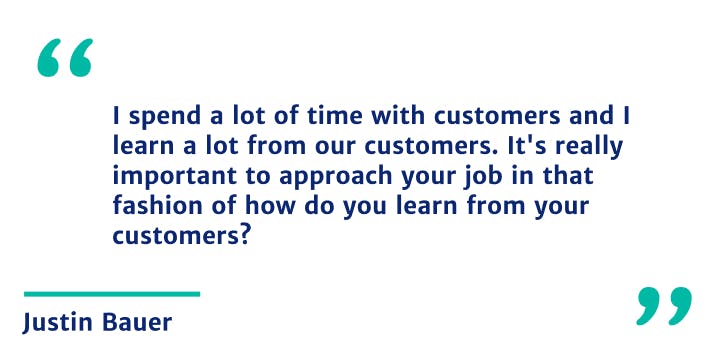
“Question [00:17:29] Is there anything that you’re intentionally doing yourself that doesn’t scale, but you still see value in?”
Justin [00:17:36] Yeah, so it really is the customer, and it’s been that throughout history. So that’s the hardest thing to scale because I only have a set number of hours in the time I’m spending with customers can, I can’t actually grow that, but I hold onto that very dearly. I think it just sets importance, do the things that you want the team and the company to also do, you can say whatever you want, but people judge you and try to emulate you by your actions. When my team and the company sees that I am talking to customers all the time that I am out in the field, I guess the field now is virtually, but, working with prospects and working with the sales team and, and even doing things like this one, I actually stopped doing recently because it got a little bit too much for me, but up until about six months ago, I read every single customer feedback that came in and that did not scale. The reason why I do that is that it’s an important signal to the company of how important the customer is. It’s something when a CSM (customer success manager) that maybe I’ve never met or a customer support person writes up customer feedback. And then I respond to it as the head of product like that. I think shows that person, that I really care about that. And I really appreciate the fact that they took the time to write that up. The overall thing is, what’s the most important thing that matters to you, try to figure out how to scale it, but those are the things you can do. They’re not scaling for us. It is the customers’ part of the team. That’s our number one principle. And so I spend a lot of my unscalable time actually focused on the customer.

“Question [00:19:54] How do you balance the influence that you have on the roadmap of your product with the influence that your team has?”
Justin [00:20:01] I think it’s really important that product leaders have strong opinions, loosely held and the loosely held is an important part of this, but I do think it’s important to have opinions. I’ve found that the job of the PM, honestly, doesn’t change. It’s just the scope changes. That’s kind of where I think about where I spend my time. My job is to think about the next two to three years. That’s the scope. Obviously working with Spencer, our CEO, thinking about the company level vision and the product vision, ultimately for where we want to be, not even in 2021 or 2022, but 2023. That’s a key part of my job and I’m the only person that is doing that. I work with my team to think about that, but I’m accountable ultimately to that, and so that’s where I have strong opinions.
The other part of my job is thinking about where do we allocate resources appropriately. Are we going to spend this? I’m not at the week level or the month level, even the quarter level, many times, but I’m thinking about that at the half-year. Are we placing the bats in the right way in terms of the overall resources of the company? So those are my responsibilities because I’m the only one that actually in partnership with my peers can really do that. Now it’s just about empowerment. So now can I empower the great people that I’ve hired to do the same thing, but for their scope.
Yes, I have opinions at that level too, and so I’ll bring those opinions. I also believe fundamentally that innovation comes from those that are closest to the problem and the technology and the customer. The reality is like, that’s not actually going to be me. My PMs are going to be the ones closest to their problem to their customers, but ultimately the technology to solving the underlying problem. And so it’s really important that I trust them that they’re ultimately going to be coming up with the right problems to focus on. I work with them on making sure that they’re thinking through it the right way that I’m asking the right questions, but I try not to let my opinion override it’s more, make sure I’m asking the right questions so that they feel even more confident, in kind of what they’re trying to accomplish.
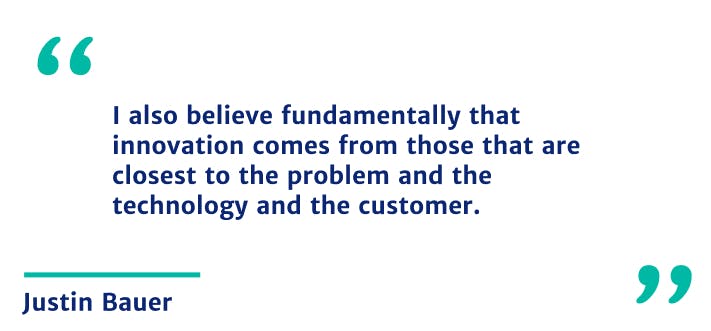
The first thing we do is to think about the North star. I always start with the vision. I think every great product leader should be starting with a vision. We think of the North star really as the representation of that where are you going? And then the underlying North star metric and constellation and metrics that matter for you. Starting there is really important. I’m sure people here are familiar with the concept of OKR is, and I always like to say they’re called OKR is not KROs for a reason. You always start with the objective and then identify the metrics that will help you understand if you’re accomplishing the objective, not the other way around. So that’s, that’s really important.
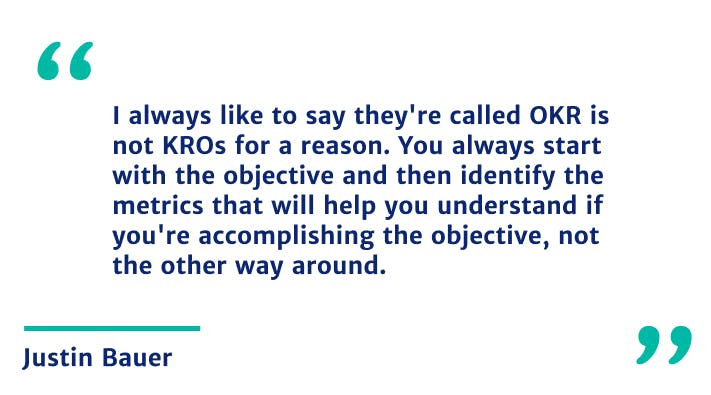
That’s one example of ways to get kind of the most out of the products. I would say everyone always thinks about, Amplitude and driving kind of the quantitative side, the science side. And I think this is one of those little-known, hacks, within the product is that it’s actually great for doing targeted user research because you can now target your research based on how people use your product. So we actually do that, where anytime we release a new feature, we actually set it up based on how far in-depth to that feature you got, we will then send you Calendly links that hit our user research calendar. Then it’s releasing a feature four days later, you actually got a bunch of customers that you can talk to you and you know, which one’s successful, use the future in which ones did not. I think that’s helped accelerate our, user testing and user research, quite a bit. So that’s a nice little hack that people do.
So people run a lot of A/B tests. I find that in terms of how to run A/B tasks, there’s a lot that’s written out there and don’t need to go into that, but I find that not enough people actually think about evaluating the why behind the A/B test. Why did it succeed or why did it fail? And that’s actually the most important learning I think that you can get to inform your broader mental model and understanding of your product. So people actually use Amplitude for that. They do use Amplitude to evaluate that the A/B test, but I think it’s more interesting to actually look at the people that found success in the A/B test and actually understand what did they do? What did they do differently? Maybe you can use that to actually when you do the full launch out, even get more users to actually find success there, or if it failed, why did it fail, go and talk to those users? That’s another way that people use Amplitude to help them build a better product.
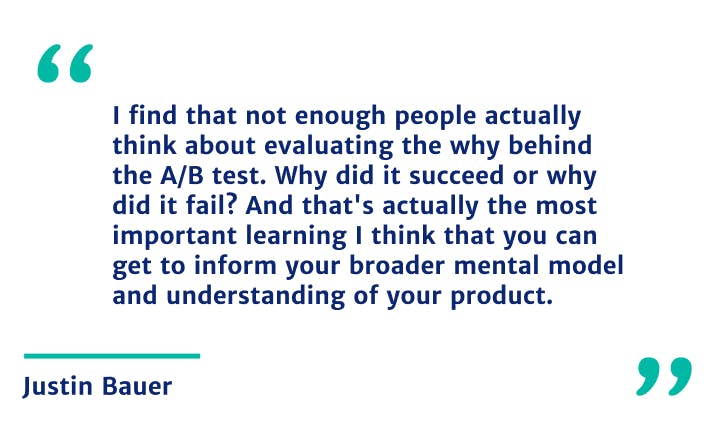
“Question [00:26:45] What are other tools that you or your team use internally as part of the product stack?”
Justin [00:26:50] This is not just for product teams, but Slack is a critical tool. I’m sure everyone here uses Slack. We actually have an integration with Slack that makes it really easy to share a link in and unfurls it. You can see the chart in your channel. Once again, it goes back to the job, a PM and a product leader are to align and inspire and metrics help with alignment. So you want to make sure you’re constantly communicating with, your design and engineering counterparts in Slack, a great way to do that. That’s a key one. We use Figma on the design team. I think that’s becoming even increasingly more important in this world of working remotely, it’s a great collaborative tool.
I’m now starting to see, not just designers use, but, PMs and engineers actually use that as well. We recently adopted Productboard, so that’ll be a new one for us. We’re mostly focused on the kind of repository of customer feedback. We were previously using JIRA for that and that wasn’t scaling. We started using Product board, and so hopefully, at some point in time in the future, I can report on how that has gone, but early signs are great there. I mentioned JIRA, some teams use Trello as well. Then obviously we use Amplitude a ton. That’s one that we’re using a ton for product analytics, but also on the data management side, making sure that we’re creating the right instrumentation enabled. You can do some of the QA of that and validating to make sure everything’s correct, also transforming things that ended up getting through that are buggy. So that’s an important part of our stack, obviously.
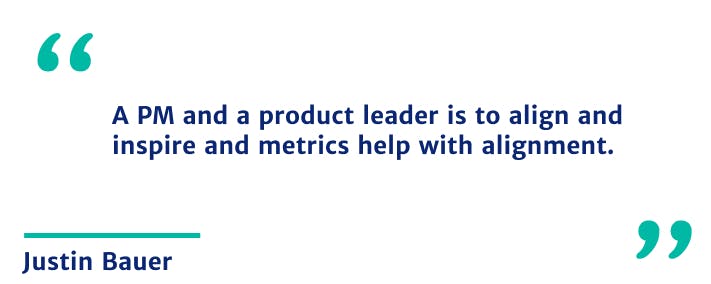
Check out: Streamlining Your Remote Teams’s Workflow in 2021
“Question [00:28:57] How do you see the product management industry as a whole and where do you think are the biggest opportunities for product people right now?”
Justin [00:29:03] I think it’s a really exciting time to be a product person, honestly. It goes back to something we talked about earlier, which is that most companies especially now, we’re seeing this trend even before COVID, but like most enterprise companies, the fastest growth was happening in digital. It’s funny because we’ve been talking about software in the world and all these things for now, but it’s actually happening now. I’m seeing a number of people that were, customers of mine back when Amplitude was small and we were 20 person startups that now are actually running large organizations within fortune 500 companies because large enterprises are realizing that if they are not able to innovate and drive growth through digital, then they’re actually not going to survive. The skill sets that PMs have are the right ones to actually lead these companies through this digital revolution. I think this is a really, really exciting moment to do that, to actually be the leader. I do believe that the Chief Product Officer is going to be the next key leader of the executive and will be many of the people today that are leading products will be the CEOs of the future. I think everyone here I’m sure is already sold that product is the right fat, but I hope now they’re even more encouraged because I believe the skillsets that we bring to our discipline honestly, are the right ones to help every company be successful in the future.
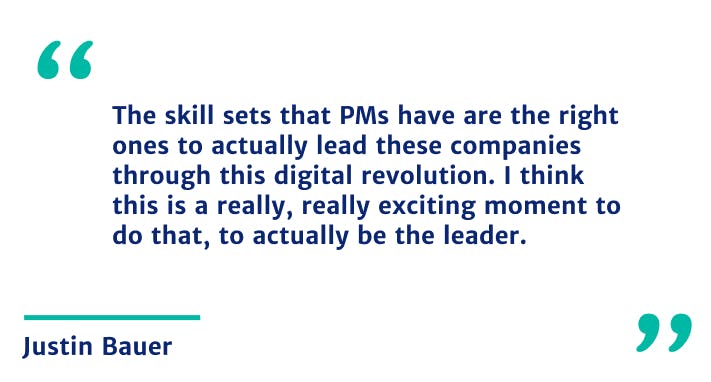
Thank you for tuning in to Season 5 of the Product Podcast by Product School. Don’t worry we’ll be back again soon for Season 6!
Listen to our episodes on your favorite platform
Stay tuned for new episodes
By sharing your email, you agree to our Privacy Policy and Terms of Service

